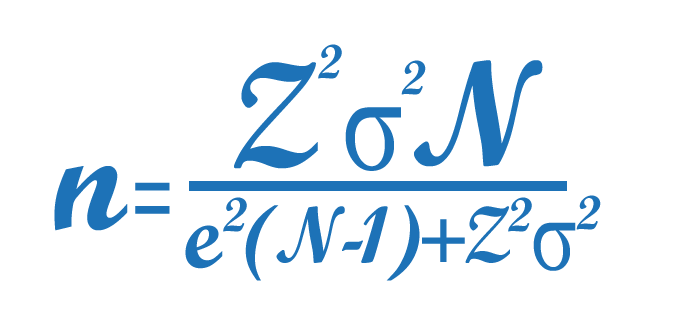What is a population sample?
A population sample is a set of elements that represent the total universe, that is, they are a fraction of the total number of individuals to be evaluated.
Establishing the size of said sample is an important process in any investigation since it will allow a viable and credible study to be carried out always delimited by the objectives of the study and the different characteristics of each population.
Determining the size of a sample saves both financial and human resources, in addition to considerably reducing the time to carry out the research you are carrying out, which can be of all kinds, such as opinion studies or some market research.
How to calculate the sample size you need for your research?
There are different ways to obtain your sample size depending on the data available, for example, if we have the number of people to whom we will carry out the study (for example, the number of inhabitants in X city) , It is said that there is a finite universe, this time we will address this class of universes and how to obtain the ideal sample size, to achieve the above, the following formula proposed by Murray and Larry (2005) is used:
.

Where:
n = is the size of the population sample to obtain.
N = is the size of the total population.
σ = represents the standard deviation of the population. If this data is not known, it is common to use a constant value that is equivalent to 0.5
Z = is the value obtained through confidence levels. Its value is a constant, generally there are two values depending on the desired degree of confidence, 99% being the highest value (this value equals 2.58) and 95% (1.96) the minimum value accepted to consider the investigation as trustworthy.
e = represents the acceptable limit of sampling error, generally ranging from 1% (0.01) to 9% (0.09), with 5% (0.5) being the standard value used in research.
Once the appropriate values have been established, the values are substituted and the formula applied to obtain the size of the population sample corresponding to the determined finite universe.
Once the mathematical process has been completed, the sample will be obtained, which, as mentioned at the beginning, will help us to carry out a valid and complete research.
If you want to know more about sampling, we recommend you read our article: Types of sampling.
If you feel a little lost or this seems very confusing, don't worry, we have something for you. We have created a tool to help you in this process, use our Sample Size Calculator!
Now that you know how to calculate the sample size, it's time for the surveys!
At QuestionPro we have everything you need for you to create and send surveys to your sample to guarantee the success of your project. Get started today by creating a free account and explore our many features.
Survey Software Easy to use and accessible for everyone. Design, send and analyze online surveys.
Research Suite A suite of enterprise-grade research tools for market research professionals.
Customer Experience Experiences change the world. Deliver the best with our CX management software.
Employee Experience Create the best employee experience and act on real-time data from end to end.






